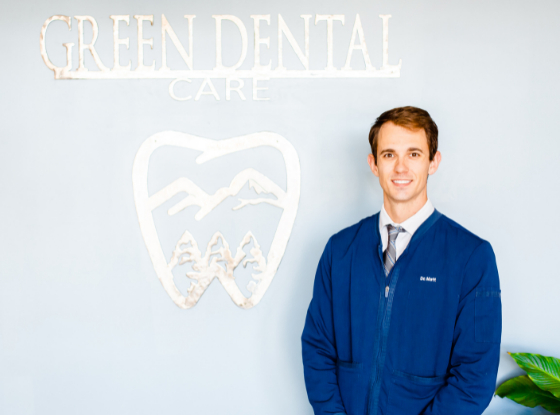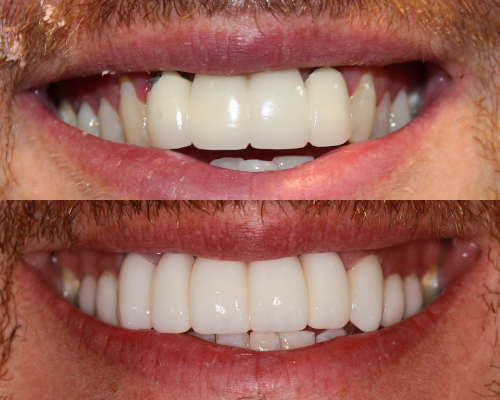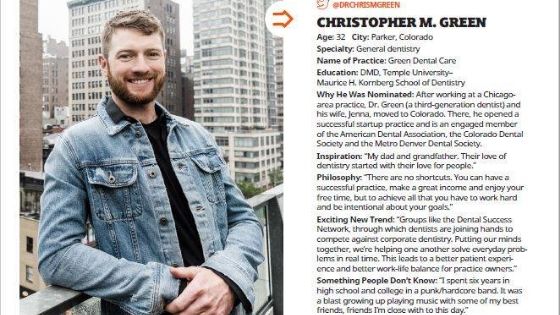6 Signs You Need a Root Canal

Do you suspect that you could be having an infection deep inside your tooth? The best way to be certain about your need for a root canal is by visiting Green Dental Care in Parker CO. Dr. Chris Green will examine you and put together a treatment plan if needed. In the meantime, there are some of those warning signs that a root canal is in order.
Darkened or Discolored Enamel
Teeth normally darken at approximately the same rate. However, one tooth may darken at a faster rate than the teeth near it. This scenario could be an indicator that tooth decay is occurring at a high rate or the internal structures of that particular tooth are degrading very fast. Regardless of the cause, visit Green Dental Care so that appropriate treatment can be started promptly.
Dr. Chris Green explains that tooth discoloration often sounds the alarm for infected or decayed teeth that aren’t causing other easily noticeable signs, such as sensitivity and pain.
Pain
Do you feel pain when you bite crunchy food or when you apply pressure on a particular tooth? Do your teeth hurt if you jump or lay down? This pain may be alerting you that you have an infection inside the affected tooth or teeth. See a Parker dentist immediately so that the root cause of the pain can be addressed before it costs you your tooth. If a root canal is deemed to be necessary, then it will be done so that further damage to your tooth is avoided.
Lingering Sensitivity
It is common and normal to experience some tooth sensitivity when you sip a hot drink or bite into ice cream. This sensitivity normally ends a few seconds after the incident that has triggered it. However, we asked our friend, Dr. Ben Kacos, a dentist in Shreveport, LA, about root canals. Dr. Kacos cautions that you should be concerned if the sensitivity you feel lingers even when you haven’t eaten or bitten into anything to trigger it. The prolonged tooth sensitivity can indicate that some nerve damage may have occurred and a root canal can prevent the damage from spreading.
Gum Inflammation
Gum inflammation often shows that a patient is suffering from gingivitis or periodontal disease. However, gum inflammation could also point to an infection inside the root of your tooth. See a dentist in Parker CO promptly if you notice swelling, a raised bump close to the affected site and pain accompanying the inflammation. A root canal could fix the problem and put an end to your suffering.
Headaches and Jaw Pain
You may need to visit Green Dental Care for a root canal if the pain you feel in your tooth is spreading to your jaw and even causing you a headache. If you feel some pain in your ear, then the tooth problem is originating from one of the molars on that side of your mouth. A root canal is in order if you are experiencing these symptoms since the problem is more than just a cavity.
Chipped and Cracked Teeth
You may also be a candidate for a root canal in Parker CO if one or more of your teeth are chipped or cracked. Such damage can expose the nerves inside your tooth to infection. Dr. Chris Green cautions patients against immediately thinking of undergoing a root canal once they chip or crack their tooth because not all situations of this nature warrant a root canal. The Parker CO dentist will therefore examine you and only recommend a root canal if that is the best option in the circumstances.
Steps to Take When You Suspect You Need a Root Canal
If you are experiencing any of the warning signs described above, it is imperative that you make contact with Green Dental Care immediately so that an appointment can be scheduled for you. If your symptoms, such as pain, are severe, seek emergency dental care from Dr. Chris Green.
The second thing that you should remember if you suspect that you may need a root canal is to avoid doing anything that could potentially worsen the condition of the affected tooth. For example, avoid using that side of your mouth to chew hard food substances since they can make a crack or chip worse.
Thirdly, take an over-the-counter medication to ease your symptoms. Talk to a Parker dentist about the right OTC medication to take and how to use it. For example, Dr. Chris Green warns patients not to place an aspirin on a painful tooth since this mode of administration isn’t helpful in this situation. Aspirin is systemic, meaning that it can only work after being ingested orally and absorbed into the bloodstream. Worse still, aspirin will trigger a chemical burn on any gum tissue that it comes in contact with. Talking to a dentist before you use any medication to ease your symptoms is therefore warranted.
Don’t make any assumptions about your condition. For example, don’t put off going to the dentist because an online search you have done has shown you that the treatment you need could be expensive or invasive. Instead, visit Green Dental Care sooner rather than later so that a correct professional assessment can be done. You will receive the appropriate treatment in a timely manner so that avoidable complications can be averted.















